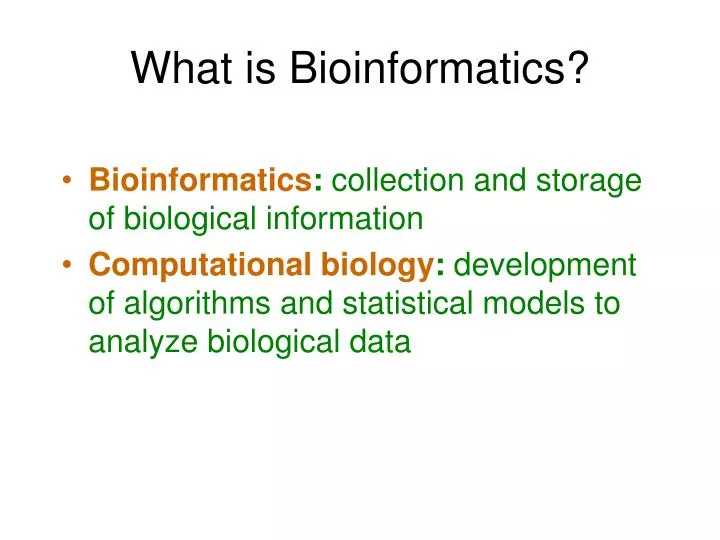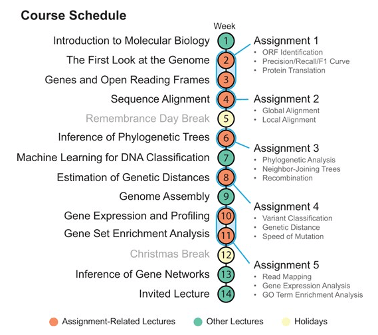Bioinformatics Tutor - An Overview
Table of ContentsNot known Facts About Bioinformatics TutorThe Best Guide To Bioinformatics TutorBioinformatics Tutor Can Be Fun For EveryoneBioinformatics Tutor for DummiesBioinformatics Tutor - Questions
Of the overall participants associated with the training, 80% were trainees from public higher education institutions, while the continuing to be 20% came from exclusive organizations. To receive a certification of involvement, students were needed to attend at the very least 90% of the overall training hours. As a result of this need, an impressive 95% of the individuals effectively gotten their certificates, having not only satisfied the minimum presence standards however also finished all designated tasks throughout the training.
Throughout the elevation of the COVID-19 pandemic, specifically in between June and August 2020, the job team was entrusted with organizing specialized training in bioinformatics. This training was especially targeted at students from the research study team Nucleus for Research study in Applied Computing at the Federal University of Pará (UFRA) The adaptation to remote discovering systems due to the pandemic produced a possibility to explore new mentor techniques and digital devices that enhanced both reach and efficiency.
This course was created to provide an accessible yet detailed introduction of Artificial Intelligence strategies, particularly as used in bioinformatics (Bioinformatics Tutor). This digital style enabled engagement from pupils throughout Brazil, several of whom may not have had the possibility to participate in in-person sessions.
What Does Bioinformatics Tutor Mean?
About 50% of the overall training hours were committed to practical activities where pupils built smart versions and applications in an array of scientific domains, consisting of genes, molecular biology, and ecological information analysis. These systems enabled pupils to involve in real-time information manipulation, design training, and algorithm trial and error.
The course attracted 80 participants in overall. Sixty of them were associated with numerous college institutions in the state of Pará, while the continuing to be twenty originated from organizations situated in 5 other Brazilian states. This wide geographical depiction highlighted the national rate of interest in bioinformatics and the growing demand for specialized abilities in this area. By introducing Expert system in a useful and relevant context, the initiative offered to link the void between concept and real-world application, supplying students with a solid structure for future research study or employment in the area.
The training campaign formed part of a more comprehensive academic outreach initiative called the Bioinformatics on the Road task. This job has, for many years, introduced lots useful site of pupils to the world of bioinformatics and computational biology. The occasions held under this umbrella initiative have actually happened across several areas and years, as summarized in Table 1 (Listing of occasions, areas, years, and total numbers of students and trainers)
Several of these groups, initially brought with each other by their participation in training events, have actually since gone on to generate independent clinical research in partnership with local academic establishments. The training not just promoted clinical reasoning within the context of bioinformatics however likewise sparked collaborative partnerships that expanded beyond the training setting.
The Main Principles Of Bioinformatics Tutor
The same team, leaving out IH and RR, also acted as tutors for the useful training modules. Funding for the task was provided through the grant 88887.200562/ 2018-00 from CAPES.
The Federal College of Pará's Workplace of Research (PROPESP/UFPA) likewise supplied financial backing, particularly for the production of the last manuscript. The writers proclaim no financial or industrial disputes of passion that can have influenced the study. All viewpoints and analyses revealed in this post are exclusively those of the authors and do not necessarily reflect those of their respective institutions, the publisher, editors, or customers entailed in the publication procedure.

Things about Bioinformatics Tutor
From a pedagogical point of view, the mentor method utilized in the training was deliberately interactive. Courses were performed in article a way that encouraged pupil engagement and discussion, surpassing memorizing memorization to check out how ideas are established, applied in life, and checked in academic setups. The training approach concentrated on supporting both strong and battling trainees, providing customized support, and structure confidence via sustained mentorship and perseverance.

Each group, including about 36 participants, was supported by 3 coaches-- a lot of whom were postdoctoral researchers with customized knowledge. These mentors not just helped design the team projects yet likewise promoted their execution, guaranteeing that each research concern was both relevant and suitably challenging. The objective was to provide a naturally realistic context that individuals could discover with open-ended purposes and access to curated datasets.
For additional understandings right into the approach and end results of this project-based discovering approach, visitors are routed to S1 Text, which includes thorough descriptions of the instructional structure, evaluation approaches, and project styles made use of in the training sessions.
The Single Strategy To Use For Bioinformatics Tutor
Of the overall individuals entailed in the training, 80% were pupils from public greater education establishments, while the remaining 20% came from personal organizations. To certify for a certification of participation, pupils were called for to participate in at the very least 90% of the complete training hours. Especially, past the students who registered in the training sessions, seven knowledgeable teachers got involved in providing the programs, while three specialized research study professors coordinated the overall training process. Roughly 50% of the total training hours were dedicated to practical tasks where pupils developed intelligent models and applications in a range of clinical domain names, including genetics, molecular biology, and environmental visit our website data analysis. The training not just cultivated clinical thinking within the context of bioinformatics yet additionally triggered joint connections that extended beyond the training atmosphere.
Comments on “The Basic Principles Of Bioinformatics Tutor”